Text
Destiny 2 Review
(Unsubmitted 9th November 2017)
Have to say I had high hopes going into a game made by 3 video game juggernauts (Bungie, Activision and Blizzard), I thought I was in for a real treat. A first person shooter by the fps dominator Call of Duty: Modern Warfare! a science fiction adventure by xbox legend, The Halo Series! and an MMO by the most well-known and most played massive multiplayer online game, World of Warcraft! Sadly my experience of Destiny 2 was quite frankly disappointing.
The gameplay felt reminiscent of Borderlands, a low gravity, jump and shoot and massive health bar enemies. I must admit it wasn’t too bad, they had so much potential for level design and area hazards, this only really showed in the last couple areas of the game.
The characters were less than forgettable and all seemed to revolve around a single character trope with no growth. Even Cayde-6 who I thought would be the comic relief quirk character didn’t get so much as smirk. Closet part to an interesting plot device being *spoilers* Ghaul deciding he would not steal the light of the traveller and instead try to earn it, but only for him to change his mind right at the end *End Spoilers*
But credit where its due the art direction was phenomenal, every area of the game was a work of art and beautiful to look at, from the huge wide shots of landscapes and planets to even the a small corridor. The music design was so mighty and powerful, even the way that events in the game would trigger a climax of the song blended so seemlessly that it felt like I accomplished something epic.
I wouldn’t really say that Destiny 2 is a bad game, just the story and characters really let down what could of been something so much greater. I haven’t fully explored what the game has to offer in the post game, but I am told it is a lot more fun. At moment I could say I do regret the full price purchase, but I’m not going to commit fully that until I have tried the post-game.
6/10 Bad story, decent gameplay, stunning audio and visuals.
0 notes
Photo
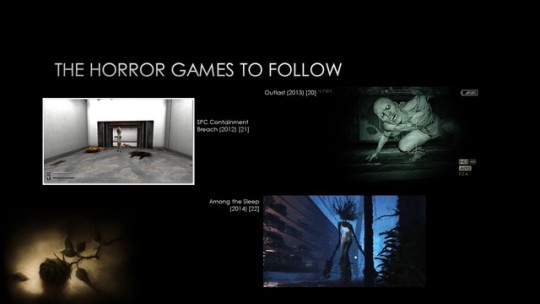
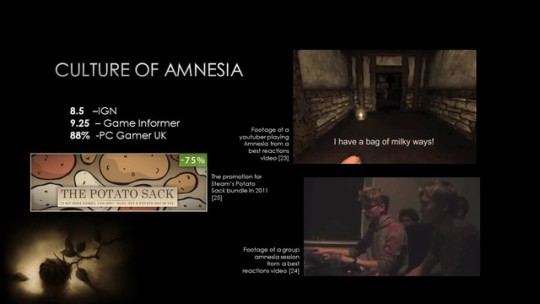
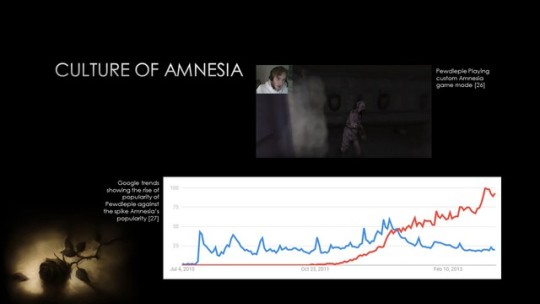
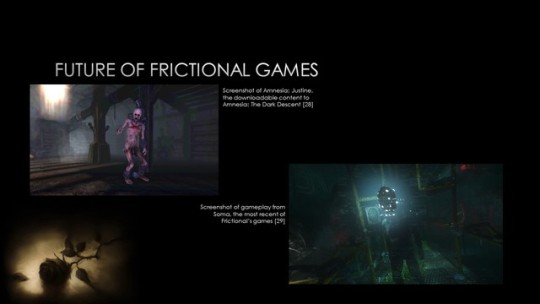
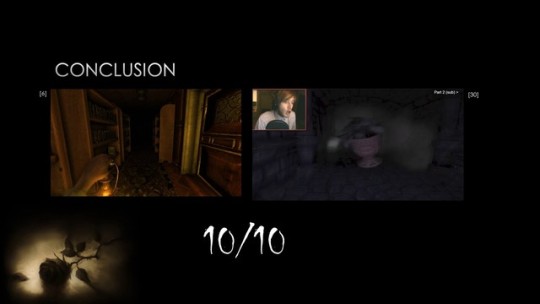
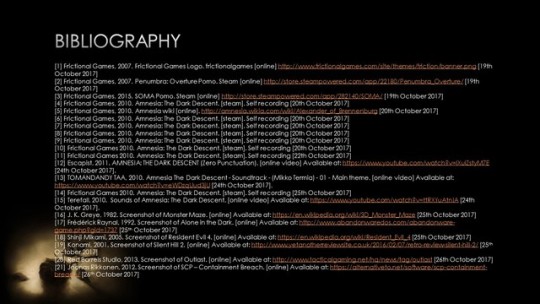

Amnesia: The Dark Descent Review (Part 2)
(Submitted 2nd November 2017)
Part 1
0 notes
Photo
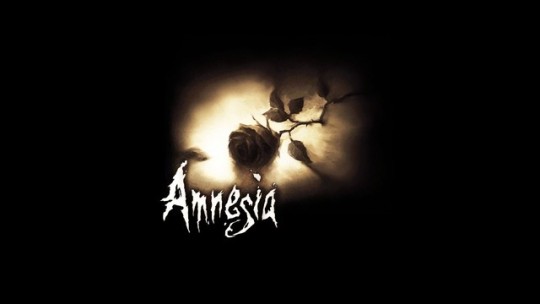

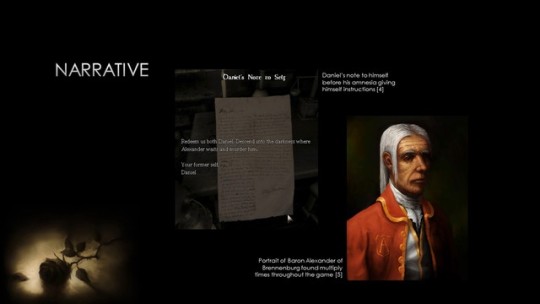
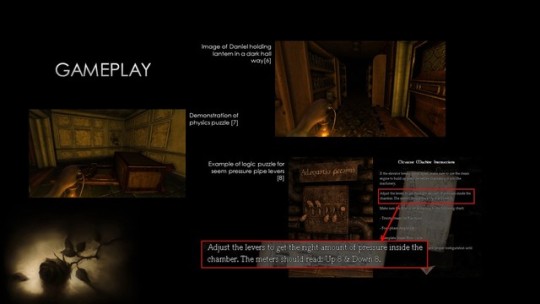



Amnesia: The Dark Descent Review (Part 1)
(Submitted 2nd November 2017)
Part 2
0 notes
Text
Metal Gear Solid V: The Phantom Pain Review
(Submitted 17th October 2017)
Metal Gear Solid V, Hideo Kojima’s final game for the long time crashing video game company Konami. What could have been the greatest Metal Gear Solid game ever made, a shining finale to one of the longest running video game series starting in 1987 with Metal Gear. Unfortunately, what would have been a masterpiece was let down by poor management, greedy CEOs and a desperate attempt to make sequels.
Metal Gear Solid V is a third person stealth game where you play as the legendary mercenary, Big Boss (also known as Venom Snake). The game begins with him waking up in a Cypriot hospital nine years after the destruction of his mother base, he is told that there are many people out to kill him so they must give him plastic surgery to hide his identity. Before that however the hospital is attacked by armed soldiers, having escaped he is greeted by Revolver Ocelot who informs Big Boss of who he is and what happened nine years ago. From here the game consists of rebuilding his base, tracking down those who betrayed him and putting a stop to their world domination.
Like other Metal Gear games, the story delves into the subject of private forces and their impact upon larger political powers using experimental weaponry or unorthodox tactics, one of which is as always, a staple of the Metal Gear franchise being a Metal Gear (a bipedal armoured vehicle). The story uses the implications of touchy subjects being torture, arms race, nuclear arms race, arms intimidation, bio warfare and child soldiers and wraps them into one coherent storyline. These subjects serve as the middle man in the timeline fixing the two stories of MGS3 and MGS1 together, or at least it would have had the game been finished.
Main Gameplay
The main objective of the game, like most other Metal Gear Solid games, is to sneak through levels and complete specific objectives.
There are two kinds of missions to do in three different areas, those being the main story missions and the side missions. The three areas are Afghanistan, Africa and Mother Base, all of which are large open world areas, Afghanistan and Africa having multiple large points of interest which the main story will take you to. Side missions are much smaller missions consisting of one objective being eliminate a threat, capture a target or steal resources.
With each time Big Boss is deployed in the world the player is given a loadout menu to choose what items and companions they wish to take with them. The edition of this is great because it allows the player options to complete the missions in whatever style they would most enjoy. This is what I think the game excels at, given the large open spaces around the mission areas the player can observe their path before taking it. This along with the large number of weapons and items that can be unlocked, there are plenty of options to take.
In most other stealth games, getting spotted by an enemy is the end of your stealth approach meaning it would be time to load a previous save if you want that perfect stealth achievement when you finish the game. For Metal Gear Solid V there is no achievement, plus upon being seen of course the iconic alert sound will play, but it will trigger a bullet time giving the player time to react by tranquilising or killing the enemy.
A mechanic unique to this Metal Gear Solid game that compliments the quirky nature of the series is the fulton recovery system, by interacting with either soldiers, wild animals, vehicles, containers or mounted weapons the player can extract items from the ground to build up their base or to be deployed on missions later. This adds an extra element to consider when planning assault on strongholds, scanning soldiers and judging their stats to determine whether they are wanted for mother base.
Due to Big Boss being a living legend amongst mercenaries, soldiers from other private forces will jump at the chance to join his ranks. No mini game required, just extract a soldier from the battlefield using the fulton and the soldier is automatically added to the list of soldiers at mother base. These soldier’s combined level in different fields have the effect of making their respective team level raise giving perks to the player. The biggest being the research and development team allowing the player to purchase new weapons and items to use on the battlefield. At times collecting the best soldiers does get tedious, but not enough that it completely disrupts the flow of the game.
Cutscenes
The Metal Gear series is known for having very long and cinematic cutscenes that set them apart from other games. Although in Metal Gear Solid 5 the cutscenes in no way reach the length of previous games in the series, but they are nothing less than stunning every time. Every shot is framed well and every character moves fluently. With each introduction of a piece of high tech gear, the game will give a dynamic view of the focus point along with a digital glint on screen giving the viewer a moment to take in the details and marvel at the design.
The cutscenes were far less interactive in this game too, previously you’d be able to interact with the surroundings while the extended cutscenes played out. While it does seem like a piece of the Metal Gear heritage was taken out, it did encourage to pay attention to the subject at hand which of course was more than enough to keep me interested. Instead of the long drawn out explanations in cutscenes, they are instead moved to the cassette tapes that came be listened to in game. Personally, I much preferred this much more as the time it took to drive between side missions was easily filled in listening to story that Big Boss wasn’t present to hearing.
Issues
Being a recent Konami game, the game has plenty of issues, some of these points are quite minor while others have had serious repercussions with the game.
Of course, the recent plague with AAA games has been the introduction of microtransactions into full price releases and Metal Gear Solid V is no exception to this. The base building mechanic has an online feature to attack and be attacked from other private forces, those being other players. In theory, this seems like it would be a great idea as a side mini game, but building up your base takes time and resources. Resources you can send out your soldiers on missions to collect, but these missions can take up to two real time weeks, but microtransactions are there to finish the missions instantly. These arbitrary wait times serve no other purpose than to encourage the player to give out more money. By participating in this mode, you are consenting to take part in the online base defence feature, where the player can attack other player’s bases and while simultaneously protecting their own. Unless the player’s base has maxed out statistics, they won’t stand a chance online. This is where base insurance comes in, players can purchase it with real money to insure they keep their resources after being attacked.
This online feature has little to no effect on the main game, the resources gained are tiny in comparison to the resources gained by playing the main game. Building up the base to the maximum size can raise the level of the teams of soldiers, but these can still all be done simply in the main game. All that this feature really amounts to is climbing up a leaderboard that unless those payments are made, there is no hope of ever reaching the top, it is just a leaderboard of who spent the most money. Another issue with this online feature is that the servers are very slow, this is obvious when trying to navigate the menus in game, especially for the research and development menu. When navigating the menus time does not stop and the player cannot exit while a menu is loading, this can take anywhere between 5 to 60 seconds. Personally, this has caused me to die multiple times when trying to request a supply drop in the heat of battle. This has been made worst by the PC port of the game not allowing the player to interact with the menu via mouse and instead must use the keyboard, while this isn’t too significant, it is worth mentioning that it does take some getting used to.
One of the more daunting issues have been the limitations placed on the game due to Konami pushing for console accessibility. While in theory this sounds good that the game could be played on the PS3 and Xbox 360, this also meant that the game was heavily dumbed down. This meant that significantly less polygons could be rendered on screen at any given time meaning a lot of these big open areas became empty and baron except for a couple patrol vehicles and enemy checkpoints dotted around. This was most apparent in missions that took you to vast important enemy strongholds such as military storages, airports or prisons; these places could only render up to 10 soldiers on screen at once. They lacked the feeling of being these grand high security landmarks that would only be looked at and avoided on the map for fear of alerting huge armies of soldiers that didn’t exist.
The largest flaw of Metal Gear Solid V anyone can tell you is the ending, or lack thereof one. Instead of this game being the final chapter of a legendary game series, one that has evolved alongside modern gaming, it was poorly let down by Konami. After completely two thirds of the game and beating the only thing that really qualified as a boss fight, it felt as though the game was ready to start tying up all the side plots and the main storyline. However, this for me is where the game started to stagnate, a lot of the main missions began to become filler in the form of challenge modes of previous missions with the occasional new piece of story thrown in. The ending of the game is completely missing, what could have been a grand finale that would pit the army that the player had built against Big Boss’s final enemy. All of this was cut from the game by Konami to make another sequel from what would of be a great ending. Fortunately, there are videos online of the unfinished cutscenes and storyboards, that were taken from the ending. These can give a somewhat satisfying conclusion to the series, but it remains a let-down of what could have been.
Conclusion
In conclusion Metal Gear Solid V is in no way the worst of the series, but it is a shame that it had the potential to have been the best. From what it lacked in holding the heritage of the game, it made up for with improvements. It, started to feel like it was its own game separating itself far from the usual Metal Gear Solid formula for keeping the main core focus of the gameplay and story purpose. My advice for anyone looking to play Metal Gear Solid V: The Phantom Pain would be, enjoy the game from the first two thirds, but prepared to be let down by the last third. I could rate this game a solid 10/10 were it finished, but due to its many flaws I rate it 7/10.
1 note
·
View note
Text
Duck Hunt Review
(Submitted 10th October 2017)
Many will remember the amazing moment of playing duck hunt for the first time, truly a game that was far ahead of its era. I still remember playing on my brother’s NES as a young child in his room late at night when he came back from school. After searching the attic and finding both the old NES and the light gun, I still got the same feeling of excitement while setting it up that I did when my brother would let me play. Although it was a bit of a challenge to find a TV screen that wasn’t LCD, eventually I fished one out of the garage in order to play.
Gameplay
The base mechanic around duck hunt is to use the light gun controller that came with the game, to shoot at targets on screen in one of 3 game modes. The first and main mode being 1-player duck hunt. In this mode you would have to shoot the ducks that were alerted by the dog in the tall grass, by aiming the light gun at the screen and firing. By shooting, the screen would flash all black with a white square around the duck, this is what I assume is to indicate whether the gun was aiming at the target and what classes as hit or miss. It is somewhat difficult as the ducks can move unpredictably and the player only has 3 shots to do so or the duck will fly away. Every 10 ducks you shoot at, the ducks get faster and fly away after a certain amount of time, and this adds a steady difficulty increase with each round.
The 2nd mode being 2-player mode where with a second player can use the controller to control the direction of the duck. Admittedly I only found out about this after wondering what that mode actually was and recently trying it out again.
The final mode is clay shooting, in this mode you shoot 2 clay plate projectiles launched from the bottom of the screen. This mode is somewhat easier than the duck hunt mode as the clay plates follow a set path, although the player will still have only 3 shots to shoot 2 plates at a time. I remember preferring to play this mode as a child as I could hit at least one of the plates most of the time.
Aesthetic
The scenery of this game is a field of tall grass with a tree and a bush, these are well designed and play into the game as obstructions making it hard to see the duck when it flies behind them. For the clay shooting the scenery is an open field and mountain range giving the illusion of the plates moving further away as they get smaller, this makes it more difficult to shoot at them as they get further away.
The sprites of the dog and ducks have, since this game, became a cultural icons of the era. The sprites are detailed and well designed, especially for the time. The duck and dog are so well remembered that they were revamped for the 2014 Super Smash Bros as their own character. As well as the sprites, the light gun has also become a cultural icon referenced in pop culture and other games such as Enter The Gungeon and League of legends.
The sound design of the game is great, the music is fun and light hearted, fitting for a simple arcade style game. The start of each level features the dog barking as they jump into the tall grass, the speed of the three barks indicates how fast the current round is going to be and it is a good way to psych the player up for the difficulty of the level. This is the same for the sound of the duck flapping their wings, the faster wing flapping sound, the faster the ducks will move and fly away. What has also became a staple scene of the era, when the player fails to shoot the duck and they fly away, the dog will peak from the grass and laugh at the player with a mockingly silly tune.
Conclusion
In conclusion Duck Hunt remains to this day an amazing game that was innovative and unique to the era. Although the hardware may be difficult to get a hold of, I would definitely recommend that anyone interested in games to play this timeless classic. I would rate this game 9.5/10.
1 note
·
View note
Text
Takeshi’s Challenge Review
(Submitted 10th October 2017)
When you think of the name Takeshi, you’d think of the actor, film director, artist or just Takeshi’s castle if you’re from the west and aren’t familiar with the man himself. In 1985 Takeshi Kitano was approached by Taito Corporation and together created what is considered to be the worst and hardest video game of all time. Never have I felt so distressed and angry after playing a video game as I did when attempting infamous Takeshi’s Challenge.
Story
The story behind this game is very cryptic, you aren’t given any idea as to what your goal or even your current objective is. It begins with what is believed to be Takeshi getting yelled at by his boss which then leads to him getting fired. From here on there is no obvious narrative or indication of where to go or what to do. The player can leave work and is greeted with a town to explore, but everything is so mundane. The player can go to bank and withdraw money, go to the arcade and play pachinko or drink at the bar. After reading enough walkthroughs I found that the player would have to take money from a specific office plant and then drink at the bar continuously until Takeshi blacked out. Through several seemingly random actions the player will eventually, if they haven’t stopped playing by this point, board a plane to an island.
At the final section of the game it is only then apparent that aim of the game or the “challenge” was to get the treasure at the end of the cave on the island. Upon reaching the treasure you are finally cut straight to the face of Takeshi Kitano on a black screen with the simple message of “AMAZING” with “THE END” in the corner. I feel there is nothing more insulting than this screen, after such a long drawn out mess of a game to be rewarded with this. The only amazing thing was that this was licensed by Nintendo.
Gameplay
There are 3 main sections to this game starting with side scrolling exploration through a town of similar proportion to Zelda 2 Adventure of Link. For the most part of this section it is simply walking left and right, punching, jumping and talking to NPCs. Walking from A to B in outside is a challenge enough in itself, just about everyone outside will obstruct and attack you. Men in in sunglass, who after research I found happen to be the Yakuza, will walk at the same speed the player and punch at them. These are almost entirely unavoidable and whittle down on the only health you have which cannot be replenished until way later in the game. You only start out with 3 hearts and death is permanent with no continues. If the player dies, they must start the game from the beginning.
Another section has you sing into the microphone in the controller. While this is very innovative for its time, it requires the player to be perfect while singing which was extremely hard to do considering the old technology in the Famicon controller. If you mess up at this part, you must retry the song. Although the player can try again, the 300 yen it cost to perform a song you may as well restart the game again from the beginning because that money will be needed later. Upon completing this, an old man will appear and show you a map. This map must be bathed in water for 5 real time minutes, but no more than 10. If it is, then the map must be left outside for an hour, not only is there no real point to this, it is also just staring at a blue screen and waiting for the map to soak.
A later section will have you fly a hang glider in a left to right shmup. This consisted of shooting birds and UFOs. The controls only allow you to move left, right and down, the only way to gain height is hit the blocks of wind that will move the hang glider one block upwards. The fact that this stage goes on for an extended period, all the while mountains come at the player that they must avoid makes for stressful experience. There are no hearts and one hit will give the player a game over, once again sending you straight back to the beginning of the game.
The final section consists of a cave where the player must reach the left side of the cave all the while enemies spawning, some too short for the bullet to hit. At this point I had long since given up and turned to a let’s play. Using a glitch of opening the start menu and closing causes the enemies to disappear and they breezed through, this would have been seemingly impossible without the glitch from the sheer number of enemies on screen along with the slow rate of fire of the gun.
Aesthetic
The art is simple as expected of a Famicon game, but there is a lot of empty space in town area. In the office, the space is attempted to be filled by plants that for some reason hold more detail than anything else featured in the game. The animations are for the most part fine, however the walking cycle for Takeshi causes his face to continuously cycle through happy, straight faced and sad as he walks. This makes the sprite seem broken, not to mention the happy face looks amateurly made.
The music is possibly one the most infuriating aspects about this game. Other than the hang glider section, there is one short 10 second track that plays on a loop that only stops when a menu is opened. The music for the hang glider is not any better, but instead sounds like 2 songs are attempting to play over each other at the same time.
Conclusion
In conclusion, I would not recommend this game to anyone, but it has become something of a cultural landmark of bad games endorsed by celebrities. Must credit it for its slice of life genre from the beginning where you could just explore a town and do mundane things. Overall this game is not worth playing unless you really want to challenge and frustrate yourself. I would rate this 2/10 for its unique ideas, but overall lack of understanding of game design.
0 notes
Text
OneShot Review
(Submitted 3rd October 2017)
Anyone that has played the Oneshot will tell you that it isn’t really a game and that it is more of an experience. Very few games can leave me wanting to completely forget what I’ve seen just so I can experience it again in the same way that I did upon playing the first time.
Having recently finishing Undertale and it being the big current game that everyone was talking about, I really was not expecting it to draw me in as much as it did. While Undertale is known for being self-aware, Oneshot is too but more on another side of the spectrum. It had me questioning the nature of what a video game is to a player and value of those characters that reside within the game. When you become fully immersed in a game you begin to really care for the characters, even after you’ve stopped playing. Oneshot does this excellently by putting it into perspective that the characters are not real, but you still want to convince yourself that they are.
The art style of the game is a simple pixel art style, being a pixel artist myself I find this art really endearing. The sprites are all unique and well-designed that well reflect their place within the world. The game is split into 3 areas that each use a colour scheme that best matches the atmosphere, the black and blue depressing tones of the empty barons, the slightly desaturated colours of the greenery and the warm colours of the living city.
The main protagonist of the game is a young child with cat features called Niko, the game starts with him waking up in a dark house alone. Upon further exploration, you find a light bulb that begins to glow when Niko touches it. Through the beginning it feels like a simple locked door puzzle RPGmaker game, but continuing further you meet a character named prophet bot who welcome both the player and Niko separately. This is when you realise that you are not Niko, but instead you are just the player observing and guiding him.
Throughout the game Niko will turn to look at you, the player, through the screen to talk, usually about what is happening. However most other times when alone, his childlike curiosity will ask you questions about yourself and the world you live in comparing it to his own. These interactions are what really drove me to bond with this game and Niko. The interactions feel personal and allow to share Niko’s emotion, and when Niko is sad it really began to pull at my heartstrings. Hearing him talk about his home and his mother really makes you feel sorry for Niko and cause me to feel obligated to help him get home. In many other games, you would usually make decisions leading to a story change or “oh no that character will remember that and it’ll affect the game later”. While the decisions and dialogue options still don’t count for much in Oneshot you will still spend long pauses wondering what to say to Niko when he asks you something that you really don’t want to answer.
During certain areas you, the player, will be asked to search parts of your computer to find files and images placed there by the game and given hints as to where to find them. This is an unusual mechanic that I’ve only ever seen used once before. I wouldn’t recommend it for most games as it of course would break the immersion, however for Oneshot it fits the narrative perfectly and really drives in the feeling of being a secondary character to Niko.
The only real issue I have is the information dumps that tend to happen quite often and sometimes not explained well due to the character quirks, but usually get resolved by the end. In conclusion Oneshot is an excellent journey of game. The characters are enjoyable, if not usually revolving around a single quirk. For a simple low budget RPGmaker game, it really is one of the most enjoyable games with a 4th wall breaking narrative, but is done in a new and unique way. I highly recommend this short game on steam.
2 notes
·
View notes
Text
So this is going to be a blog or a portfolio of sorts from university
(Technically started on the 19th September 2017)
0 notes